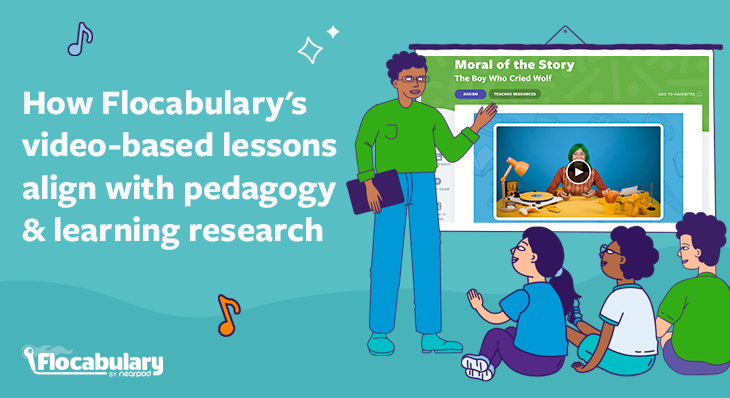
How Flocabulary’s video-based lessons align with pedagogy & learning research
The use of video in the classroom has exploded. During the COVID-19 pandemic, many teachers recognized the power of videos to pique students’ interest and generate engagement. Now that students have returned to in-person learning, videos remain an essential and well-loved curriculum component.
This isn’t surprising, given that students choose videos—such as YouTube and TikToks—as a prime information source. In fact, the 2021 Common Sense Census reveals that video viewing is the number one media activity for tweens and teens.
However, when pedagogical research drives design decisions, educational videos move well beyond engagement, helping students reach learning objectives robustly and efficiently. Flocabulary video-based lessons embody this type of research-based design, making them potent tools for instruction. And because each video is accompanied by an entire lesson sequence of impactful activities, the learning experience is not only powerful but fully comprehensive.
Sign up below to access the video-based lessons shared in this blog post and unlock the full potential of Flocabulary!
What are Flocabulary video-based lessons?
Flocabulary video-based lessons engage students and increase achievement across the curriculum through educational hip-hop music and direct instruction. The Flocabulary Library includes four video types: Flocabulary Base, Week in Rap, Flocabulary Mix, and Nearpod Originals. Every Flocabulary video is fully informed by pedagogy and learning research.
Types of videos
- Flocabulary videos feature original hip-hop songs about a wide range of standards-aligned topics, from algebra to Greek mythology to photosynthesis.
- Week in Rap is a weekly current events song and video covering headlines from around the globe.
- Flocabulary Mix uses companion Video Texts and Skill Videos to guide students through ELA analysis. As with Flocabulary Base, the video texts feature hip-hop songs about fascinating topics. Each is paired with a skill video that delivers direct instruction on a specific, standards-aligned ELA skill.
- Nearpod Originals are short lectures on standards-aligned math, social studies, science, and English language arts topics that harness the power of storytelling.
Lesson sequence
Our videos are never stand-alone; a carefully designed lesson sequence accompanies each one. This suite of learning activities, designed with Bloom’s Taxonomy in mind, includes:
- Vocab Cards and Vocab Game: Because students need multiple exposures to vocabulary words in order to be able to use them authentically, we also integrate them into the Read and Respond passages.
- Break It Down: An analysis activity in which students are guided to critically examine the video as a text and to back up their claims with a unique text evidence-gathering tool.
- Writing Prompt: An open-ended question so students can reflect on their learning and make new connections.
- Read and Respond: Reading passages that deepen students’ understanding of the lesson, and assessment and skills practice questions for each passage.
- Quiz: A multiple-choice comprehension assessment.
- Lyric Lab: A creation tool for students to create their own hip-hop song as a response to what they’ve learned in the video.
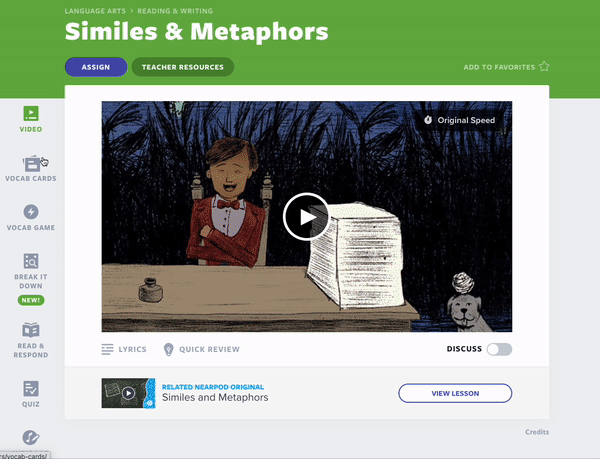
How Flocabulary’s video-based lessons align with pedagogy & learning research
No matter the type, each video is carefully and intentionally designed to embrace evidence-based principles that improve learning. These lessons are rooted in robust pedagogical and learning research principles, ensuring their effectiveness in the classroom.
Now, let’s explore the specific aspects of Flocabulary’s video-based lessons and how they align with pedagogy and learning research, including hip-hop pedagogy.
Segmenting
Segmenting refers to the “chunking” of information into manageable parts. Research shows that segmentation helps students manage a subject’s intrinsic load. Intrinsic load refers to the number of components a subject has, combined with how much these elements interact. The more “moving parts” a person needs to keep in mind simultaneously, the higher the intrinsic load—and the more challenging the learning task.
Imagine that you’re learning a new language. You’d likely find it easier to process a family-related vocabulary lesson (for example, the words for “mother,” “grandfather,” “cousin,” etc.) than a lesson on verb tense. This is because the former concept has a lower intrinsic load. After all, each noun has just one connection to process (its English counterpart). Verb tense, on the other hand, has a higher intrinsic load; there are simply more relationships between the subject’s various elements. In this case, segmenting the information—for example, into first-person, second-person, and third-person verb rules and exceptions—can help ease processing.
Because segmentation is a particularly powerful design principle, each Flocabulary Mix skills video is limited to one skill only. For example, analyzing word choice and achieving a text’s purpose—two related skills with high intrinsic loads—each have their own dedicated video.
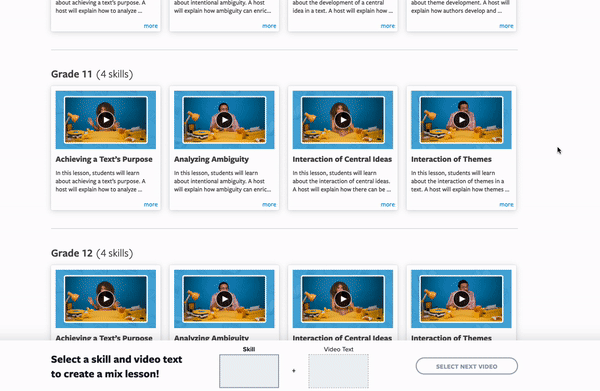
In addition, segmentation is added to Flocabulary Base, Flocabulary Text, and Nearpod Original videos through Discuss Mode, in which discussion questions are embedded between the segments. This way, teachers can control the flow of new information. They can also guide students to process each “chunk” of information through reflection and conversation before moving on to the next segment.
We also use segmenting in the Read and Respond activities, with focused passages that gradually deepen students’ comprehension of the topic or skill.
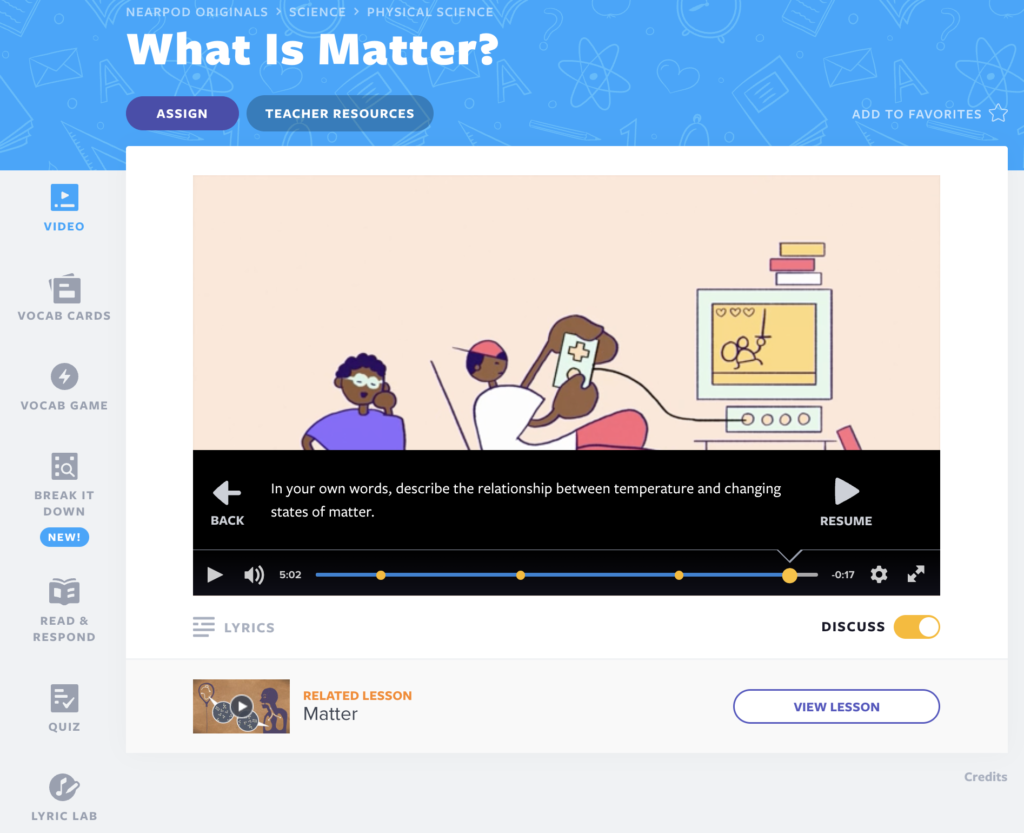
Signaling
Signaling, or cueing, is the use of on-screen text, symbols, and visual effects to highlight key information. An example of signaling can be seen in the video Transportation in NYC, where the word “transportation” is shown on-screen when the rapper sings it. The color contrast and large, whimsical font cue K-1 students to direct their attention to this new, complex word, which helps them process and retain it.
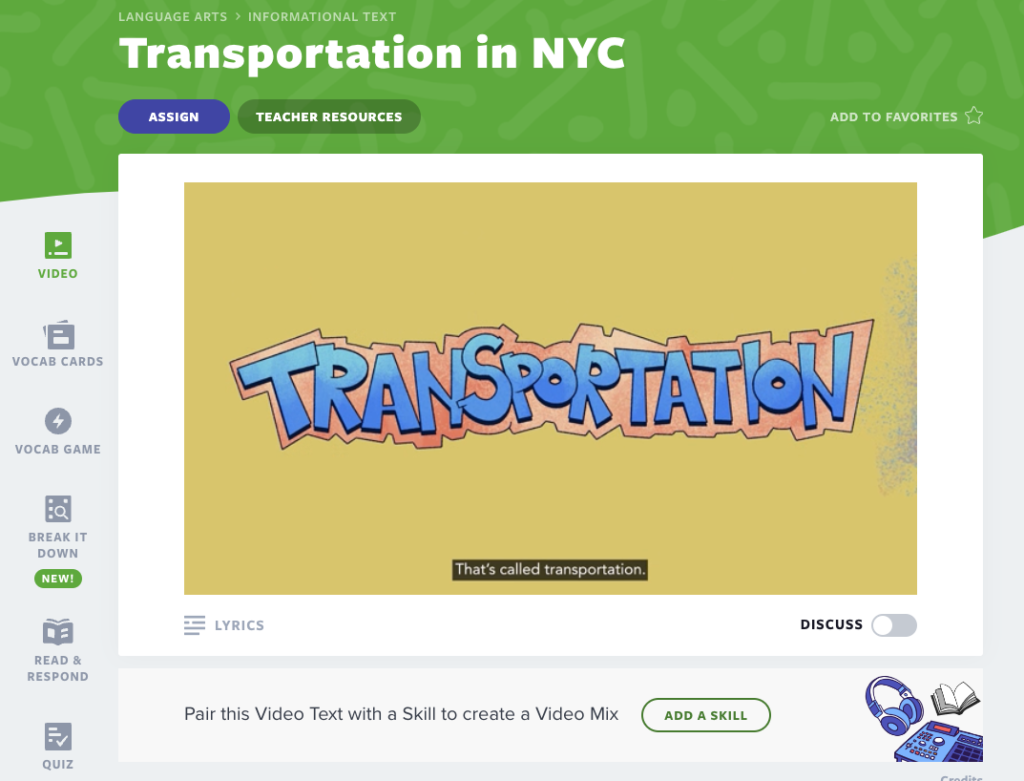
In addition to emphasizing the importance of information, signaling draws students’ attention to the way it’s organized. From learning research (Jensen, E. (1998). Teaching with the brain in mind. ASCD), we know that the tendency to categorize information is innate and that doing it effectively can enhance our germane load. Germane load refers to the level of cognitive activity required in order to meet the desired learning objective. The use of signaling to encourage this categorization boosts germane load, thus boosting learning.
Consider our grade 4 Point of View skill video, in which the image signals the information is organized into three parts—one for each point of view. The graphic also cues students to process the important connections between the sub-topics. In other words, students are cued to connect “first person” with “I” and “we,” “second person” with “you,” and “third person” with “they,” “she,” and “he.”
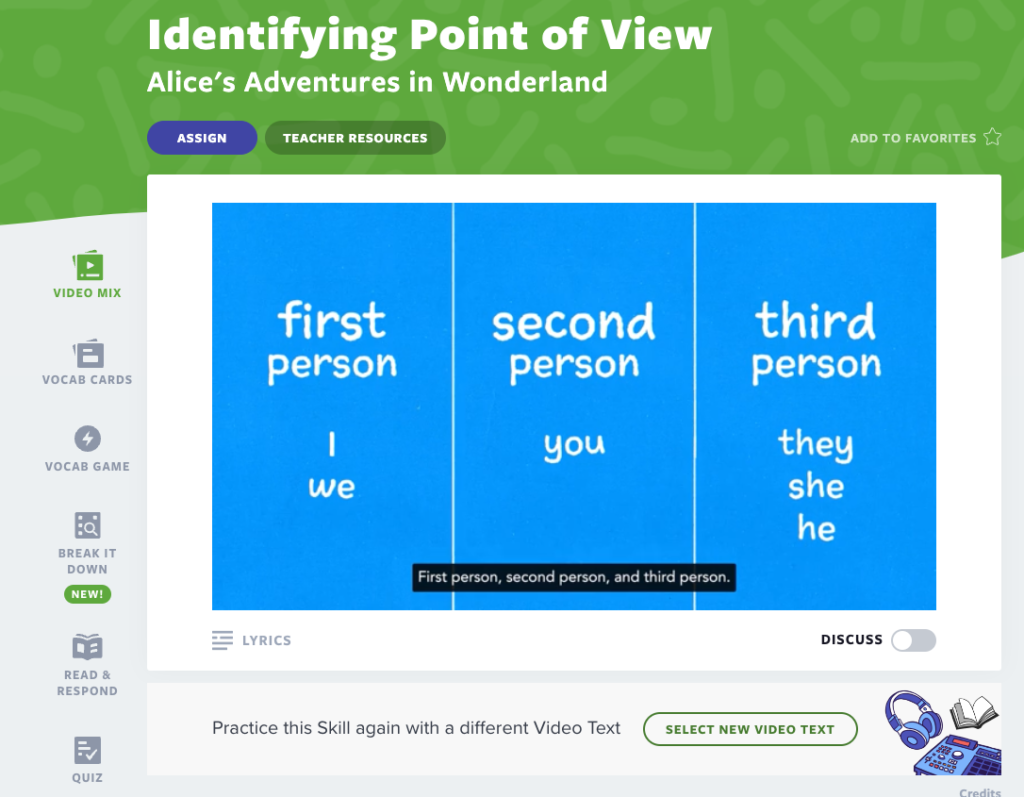
Weeding
Just as well-designed videos enhance learning, poorly designed videos impede it. Extraneous features, such as extra sound effects and busy images, constitute one such hindrance. A complex and colorful background might be entertaining—but it can act as a misguided signal, cueing students to process unimportant information.
Weeding is intentionally omitting information that does not align with the learning objectives. This includes information that may be relevant to the subject but is too complex for the grade level. Effective weeding reduces extraneous load—cognitive activity that does not lead to a video’s desired learning outcome.
Meticulous weeding in Flocabulary videos optimizes students’ processing and retention of new information. In the Grade 2 skill video Moral of a Story, the background is intentionally simple.
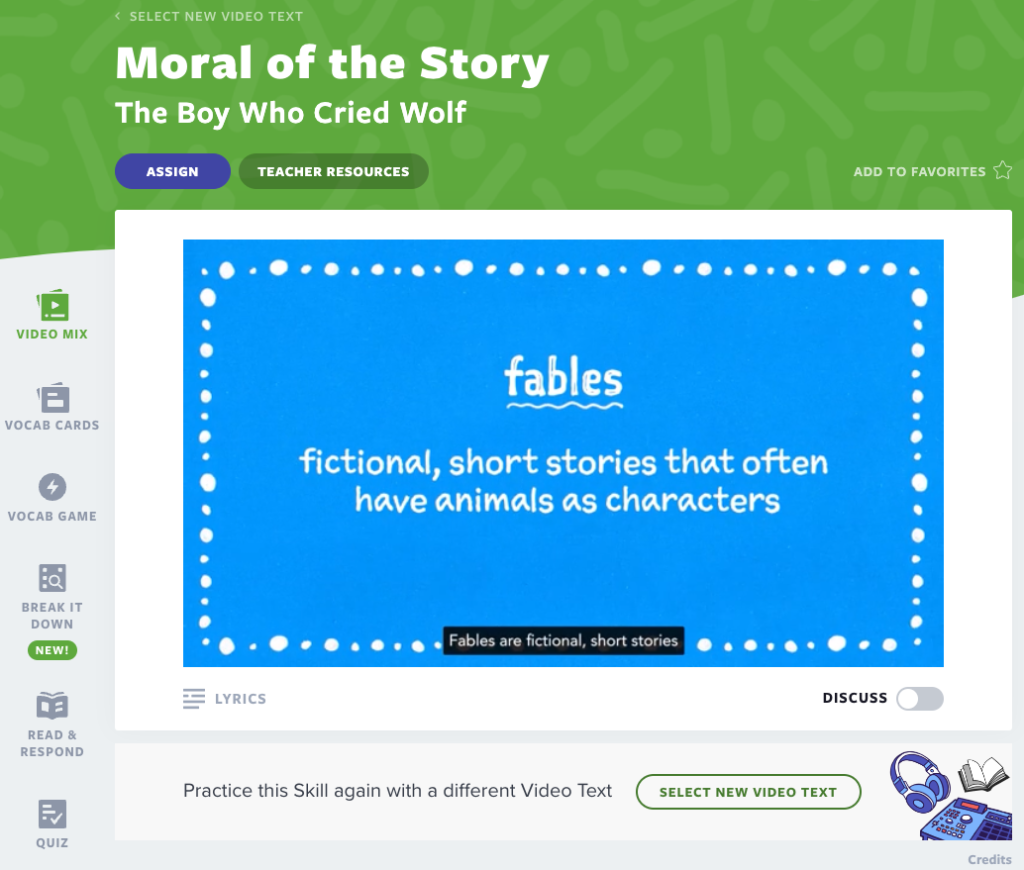
As students become more knowledgeable in an area, extraneous load changes. Information that is overwhelming for a beginner may be helpful for a more seasoned learner.
In this upper-grade adaptation of Helen Keller’s essay, “The Power of Touch,” the background scene of the girls taking selfies might be extraneous for lower grades. But for this level, the visual effectively calls attention to the idea of normalizing, rather than stigmatizing, disability.
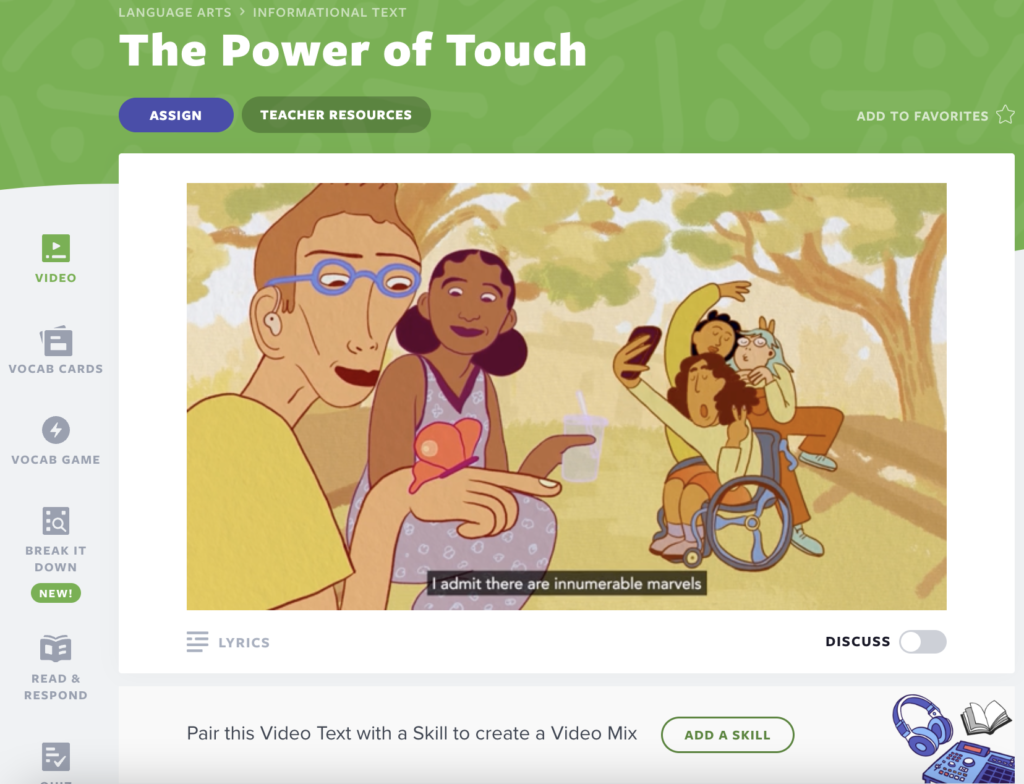
Matching modality
It was thought that people varied in terms of what learning mode worked best for them. According to learning styles theory, some people were believed to be visual learners, others were auditory learners, and others were kinetic learners. This idea has been largely discredited. Instead, it appears that a multi-modality approach to learning can be helpful for all learners. For videos, this means using both the visual and auditory “channels” to process new information.
Matching modality in videos refers to ensuring that verbal and pictorial information complement each other.
Suppose a video on bike repair featured a person standing next to a bike and talking about how to repair it. In this case, the visual channel would be underused. Similarly, if music were played while text and diagrams were shown, the visual channel would be overloaded while the auditory channel would be underused.
Instead, the video could include voiced instructions presented simultaneously with diagrams to match modality and improve learning outcomes.
In the video text Perfectly Fine to Imperfectly Rhyme, matching modality is used to teach learners about near-rhymes:
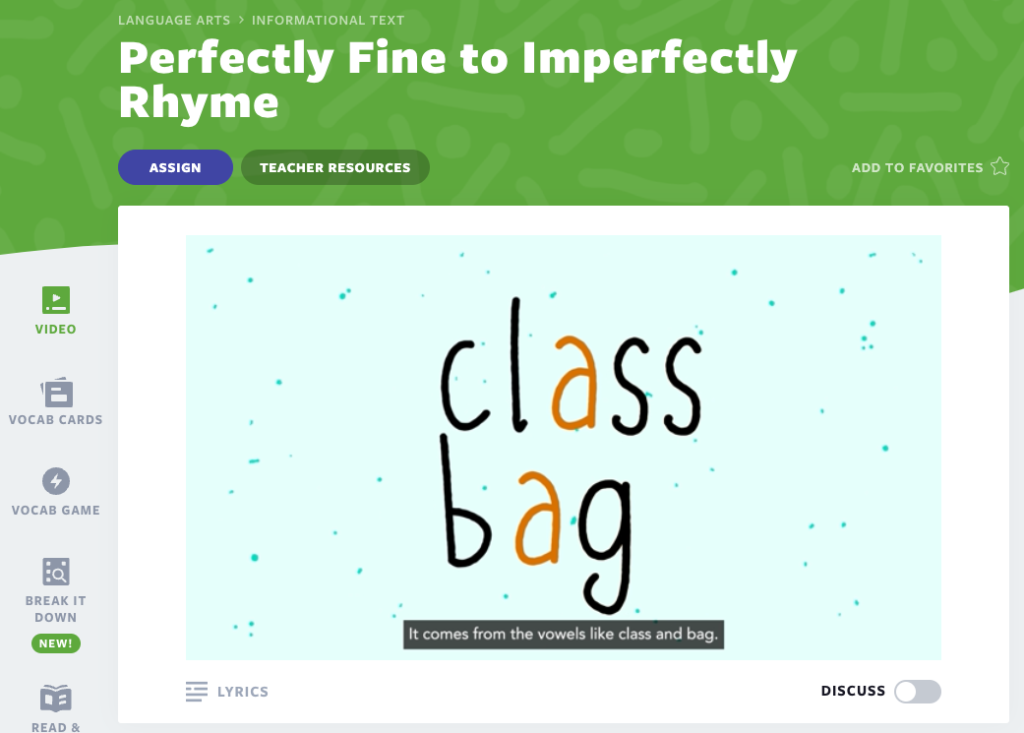
Our commitment
At Flocabulary and Nearpod, we believe that teaching is the most important job in the world—and we also know what a challenging job it can be! So, we’re committed to providing instructors with the most effective tools possible. This is why research and pedagogy inform our design process every step of the way.
Sign up below to access the video-based lessons shared in this blog post and unlock the full potential of Flocabulary!
